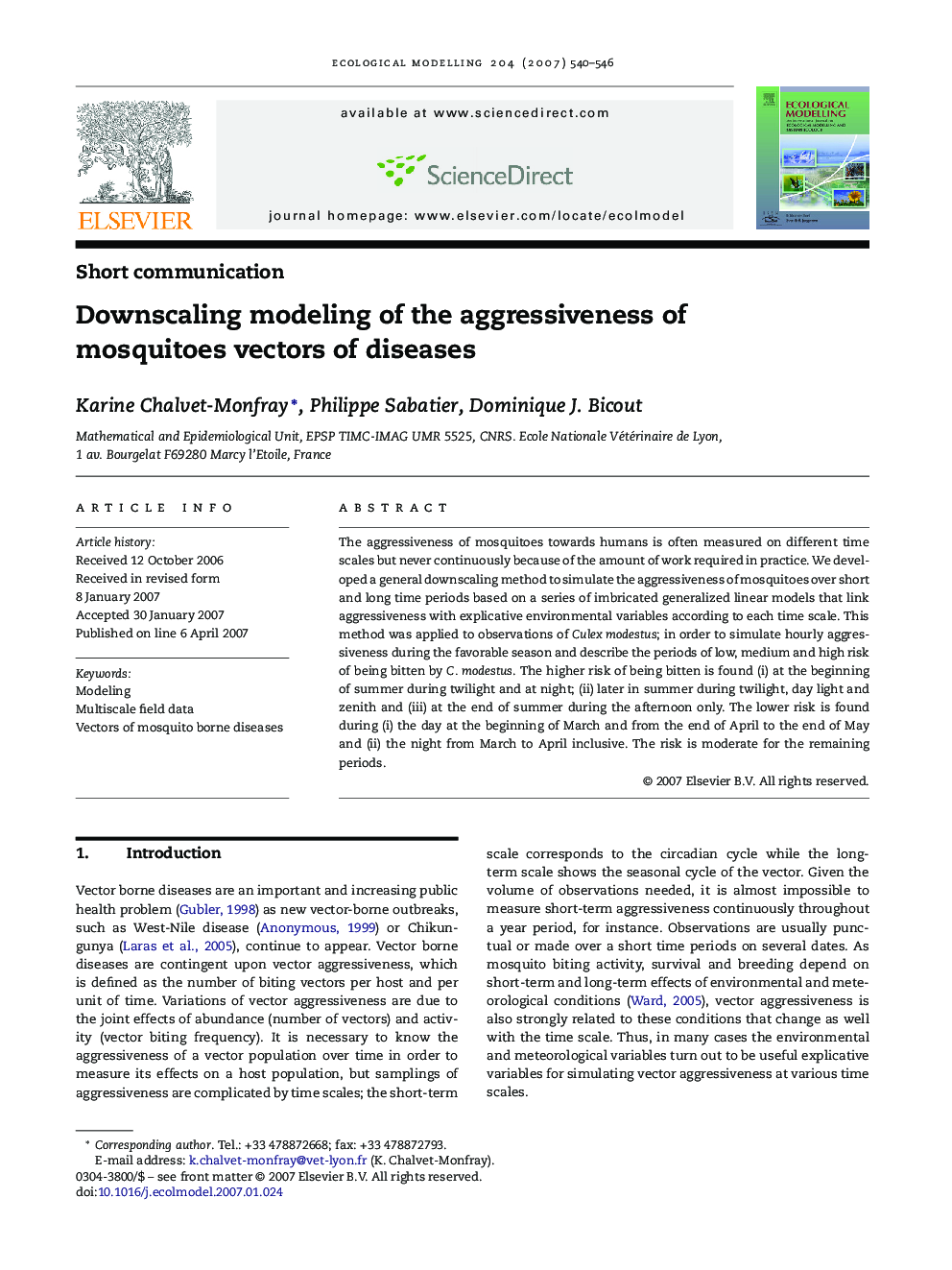| Article ID | Journal | Published Year | Pages | File Type |
|---|---|---|---|---|
| 4378379 | Ecological Modelling | 2007 | 7 Pages |
The aggressiveness of mosquitoes towards humans is often measured on different time scales but never continuously because of the amount of work required in practice. We developed a general downscaling method to simulate the aggressiveness of mosquitoes over short and long time periods based on a series of imbricated generalized linear models that link aggressiveness with explicative environmental variables according to each time scale. This method was applied to observations of Culex modestus; in order to simulate hourly aggressiveness during the favorable season and describe the periods of low, medium and high risk of being bitten by C. modestus. The higher risk of being bitten is found (i) at the beginning of summer during twilight and at night; (ii) later in summer during twilight, day light and zenith and (iii) at the end of summer during the afternoon only. The lower risk is found during (i) the day at the beginning of March and from the end of April to the end of May and (ii) the night from March to April inclusive. The risk is moderate for the remaining periods.
